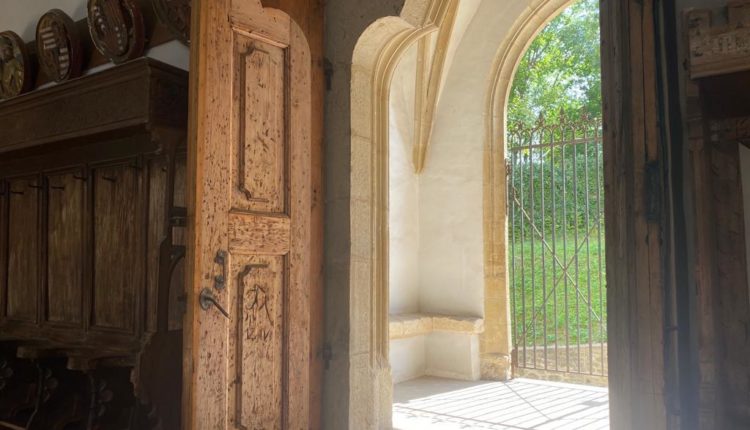VALEA TÂRNAVEI MARI, BIJUTERIA MEDIEVALĂ A ROMÂNIEI
Despre Nadeș, locanicii vă vor povesti cu mândrie, fără deosebire de naționalitatea ori credința lor. Dacă vorbele despre trecut vă fac și poftă de văzut istoria cu ochii, mergeți la cetatea săsească, unde vă dă binețe biserica evanghelică-lutherană. La Nadeș am găsit o preferată a trăitorilor de demult în aceste locuri: PRĂJITURA SĂSEASCĂ CU BRÂNZĂ DULCE.

Crișul, cunoscut dintotdeauna ca moșie a familiei Bethlen, are pe hartă, spre fala oamenilor locului, unul dintre cele mai frumoase castele din România. Se spune că este și cel mai bun exemplu de arhitectură renascentistă transilvăneană de locuire și apărare. Vremurile de demult nu lăsau aproape nicio carte despre Transilvania să iasă din tipar fără fața castelului. Era prezentă și pe cărți poștale ori pe timbre. Locul are povești frumoase, multe spuse chiar aici, lângă cel mai înalt turn al arcaşilor din Transilvania. Se zice că la castel a existat cândva și una dintre cele mai apreciate biblioteci din Europa, după ce la Criș a început tiparul de carte.
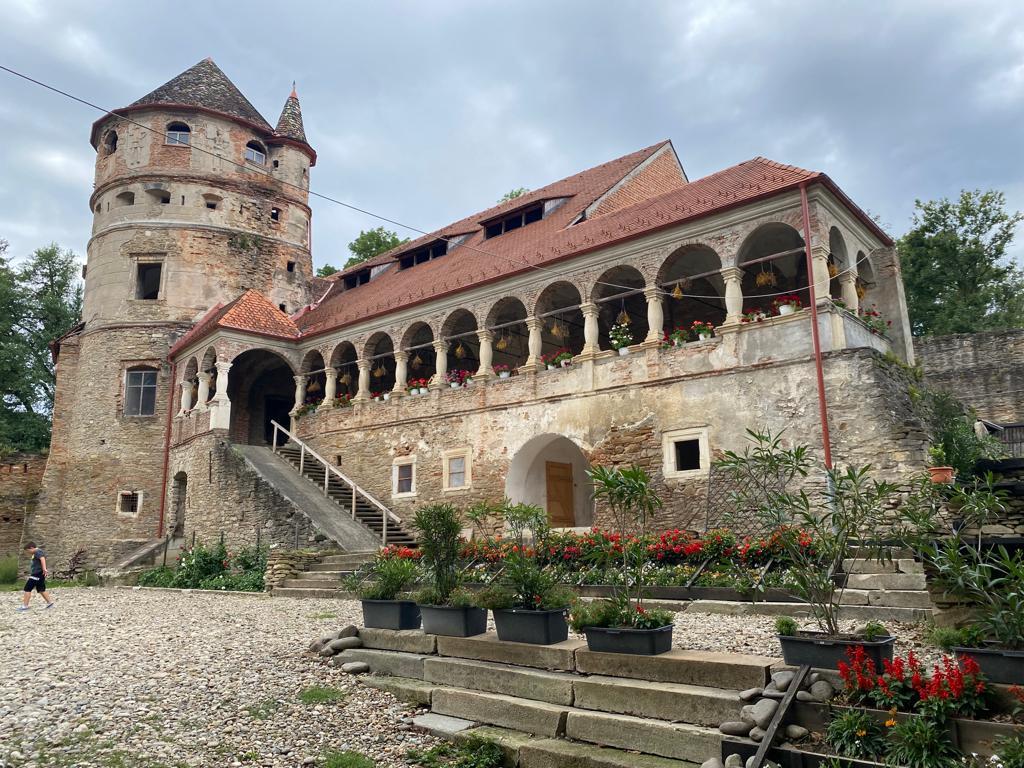
Ca un sunet de orgă venit din vremuri de demult, am găsit aici și un desert al sașilor: LINTZER CU HECIUM PECIUM.

Dacă veniți la Apold, aflați istorie în fiecare firicel de iarbă și mâncați legende pe pâine. Biserica fortificată este graniță între istorie și legendă, pentru că aici s-au purtat lupte grele cu otomanii și tot aici se spune că un uriaș a făcut trei dealuri, după ce s-a așezat la odihnă și și-a șters cizmele de noroi.
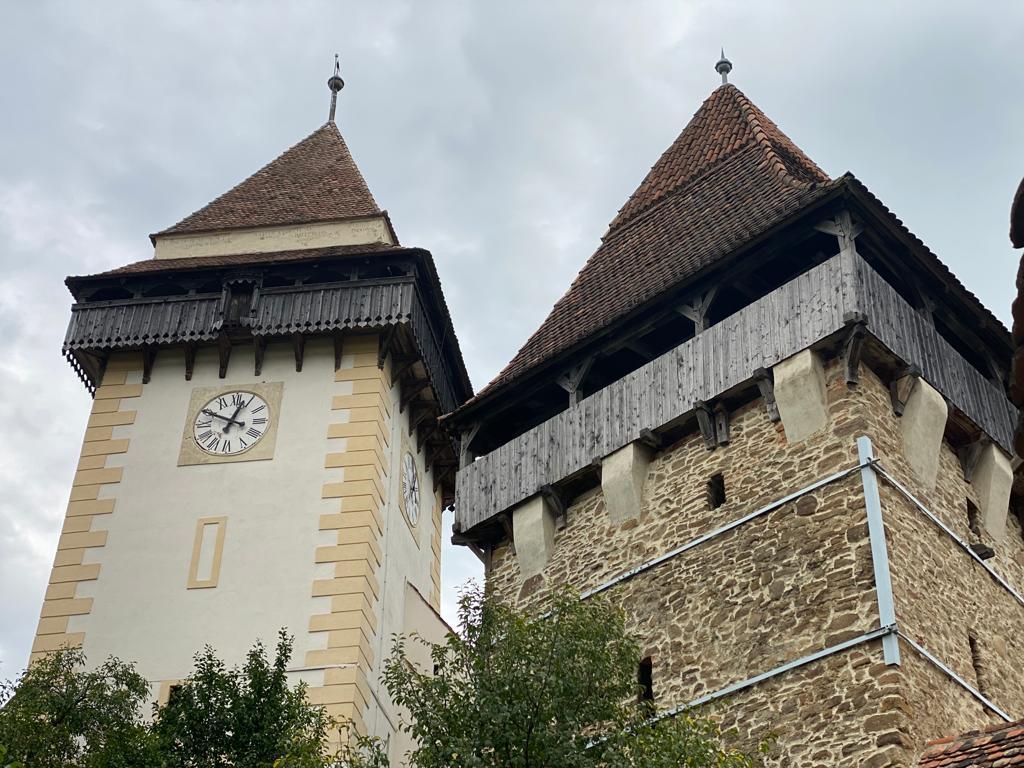
La Apold am întrebat de o rețetă care să meargă bine în povestea noastră de până acum și, dintre toate bunătățile, am ales o prăjitură numită Hanklich sau Henklesch, un fel de lichiu, botezat pe-aici HENCLEȘ SĂSESC.
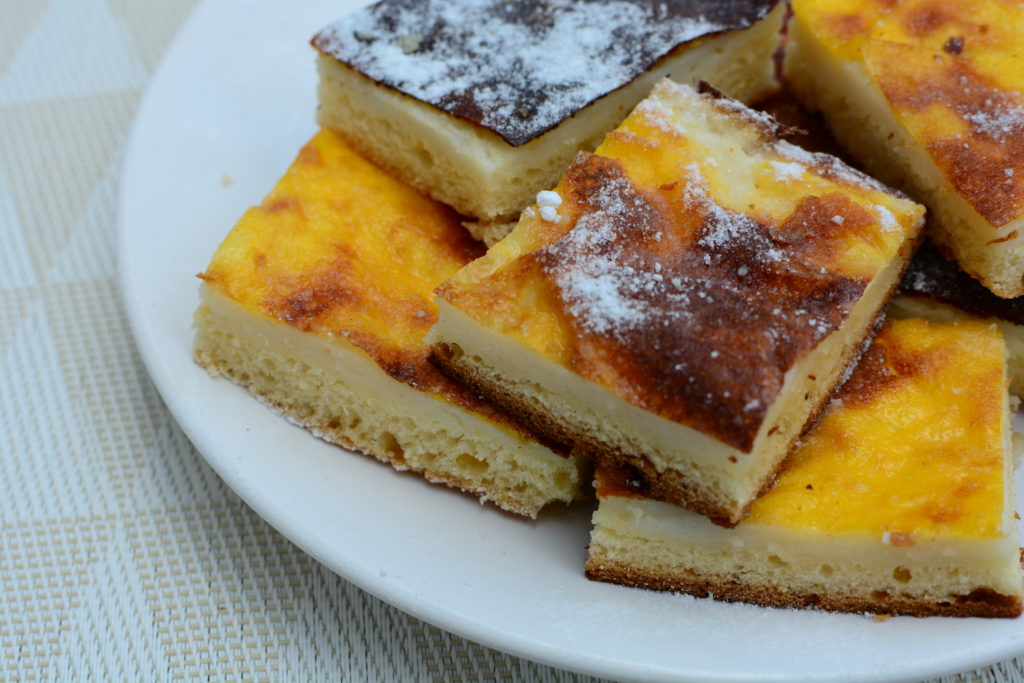
Sighișoara este locul pe care, măcar o dată-n viață, merită să-l lași să-ți cunoască pașii! Te vei regăsi pe tine însuți. Orice zi poate fi un prilej pentru a te opri și pentru a te înclina în fața „bijuteriei medievale a României”. Sighișoara trebuie trăită la ea acasă. În cetate, puteți respira aer de istorie și inspira momentul vostru, în bătaia ceasului ce tronează în turnul de 64 de metri, cu mecanismul lui elvețian și cu un cadran de aproape 2 metri și jumătate. Turnul cu Ceas este și singurul muzeu pe verticală din România.
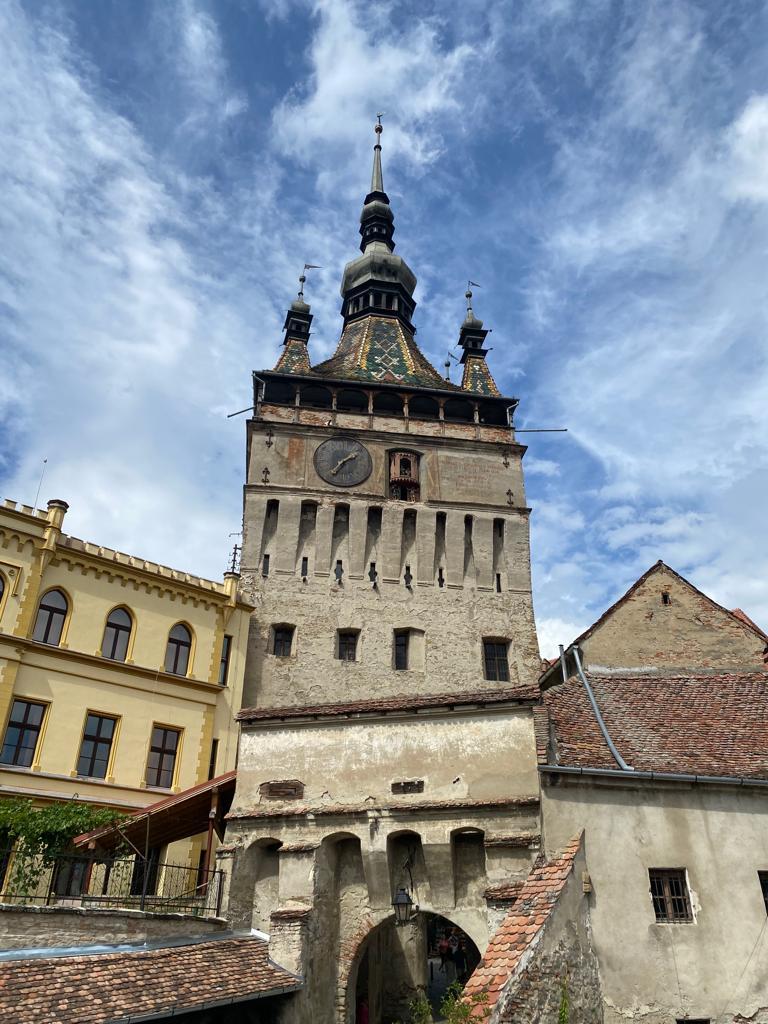
Povestea Casei Vlad Dracul spune că aici s-ar fi născut Vlad Țepeș, cel pe care unii oameni și unele legende îl numesc, îndrăzneț, Dracula. Scara Şcolarilor vă conduce, pe cele 176 de trepte ale sale, până la Școala din Deal, astăzi Liceul „Joseph Haltrich”. Aici este și cel mai important monument arhitectural al Sighișoarei, Biserica din Deal, unul dintre simbolurile stilului gotic din Transilvania. Nu multe sunt bisericile ca acesta, cu criptă sub cor.
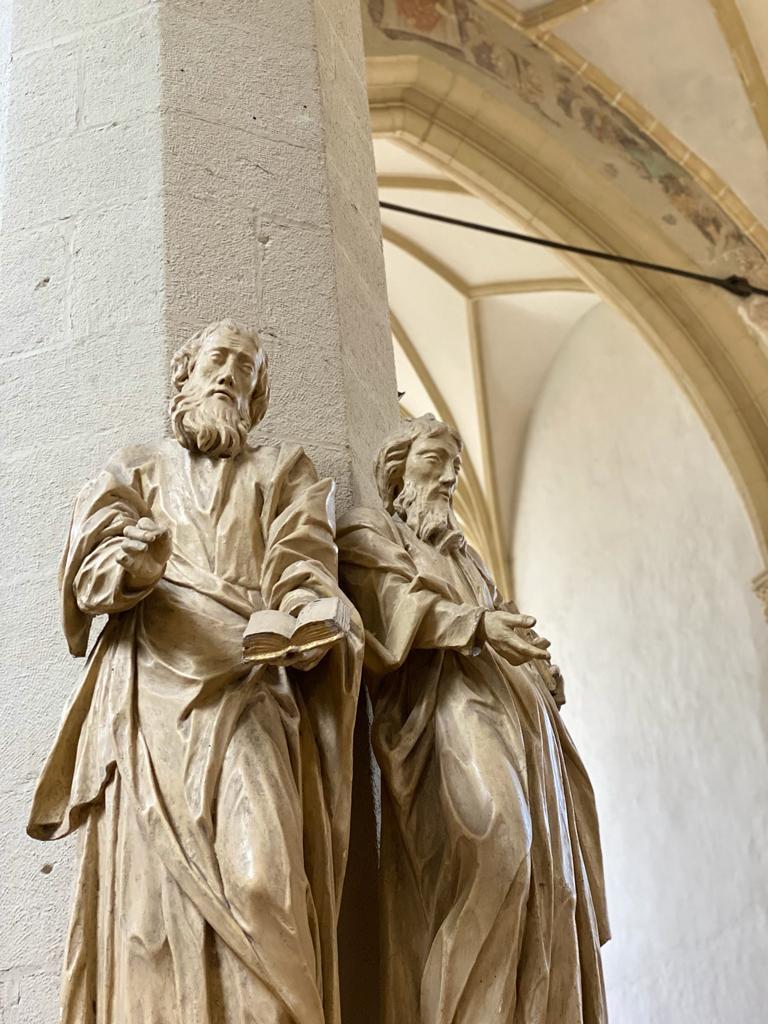
Purtând nume de bresle, turnurile cetății vă spun, fiecare, legende ale Sighișoarei. Aici se poate mânca în multe feluri care, cu siguranță, vă vor deveni repere pe harta gastronomică proprie. De pildă, aici merită să încercați o MOAGĂNĂ.
Lângă Sighișoara există suflete care i-au urmărit cetății fiecare respirație a istoriei din ultimele sute de ani. Sunt stejarii multiseculari, care, chiar și atunci când cad răpuși de fulgere, de oameni răi sau de foc, rămân locului, pentru a fi casă sutelor de viețuitoare ce-și fac acolo culcuș. Pădurea de pe Platoul Breite are peste 600 de stejari și este cea mai mare colecție de arbori multiseculari din Estul Europei, întinsă pe 120 de hectare.
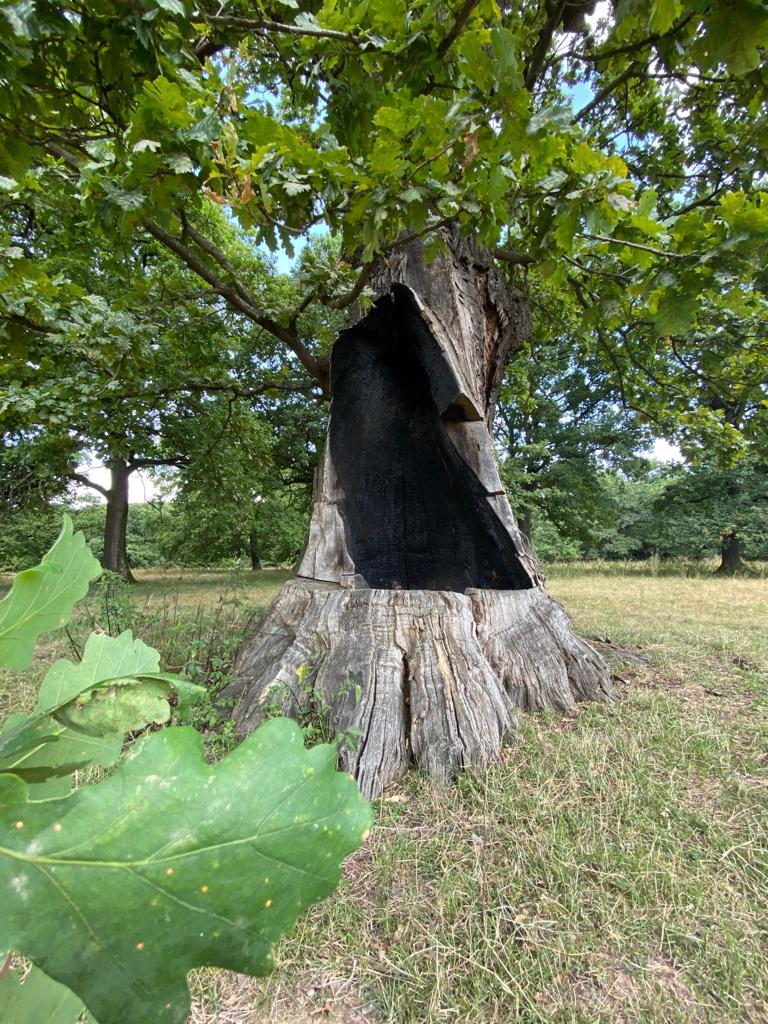
Cel mai bătrân stejar are aproape 800 de ani iar diametrul trunchiului său este de peste 7 metri. Cu un aer de poveste și cu arbori ce ascund mistere în scorburile lor, pădurea este raiul păsărilor și al plantelor, al zecilor de specii de insecte și al sutelor de feluri de fluturi.
Trecerea celor de astăzi prin Albești îl aduce-n amintire pe poetul Petőfi Sándor, care se crede că ar fi trecut la veșnicie în locul numit astăzi Fântâna Ispán.
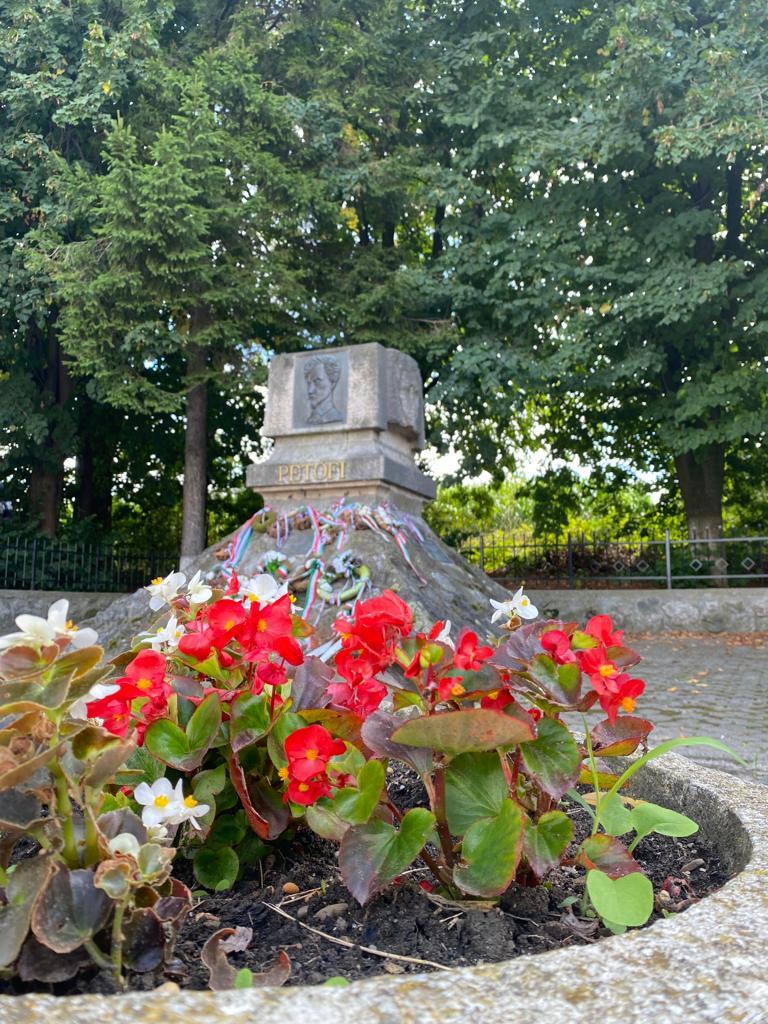
La Muzeul Petőfi se spune și povestea contesei Luise Haller, care a pus la cale ridicarea aici a monumentului dedicat Bătăliei de la Albești/Sighișoara. Aceasta a fost piatra de hotar a Revoluției Maghiare de la 1848-1849, în care au murit cu mult peste 1.000 de oameni. Chiar sub acest loc din Albești, unde acum sunt trandafiri, se află osemintele a sute de maghiari uciși în sângeroasa bătălie. Aici sunt multe feluri de mâncare ce îmbină tradițiile săsești cu cele ungurești. Nici nu se mai știe care al cui e, pentru că începuturile lor rătăcesc prin timpuri vechi. Dar au fost împreunate frumos de oameni și puse pe mese de sărbătoare. Așa este și desertul căruia sașii îi spuneau „cozonăcel minune”, iar maghiarii BEJGLI.
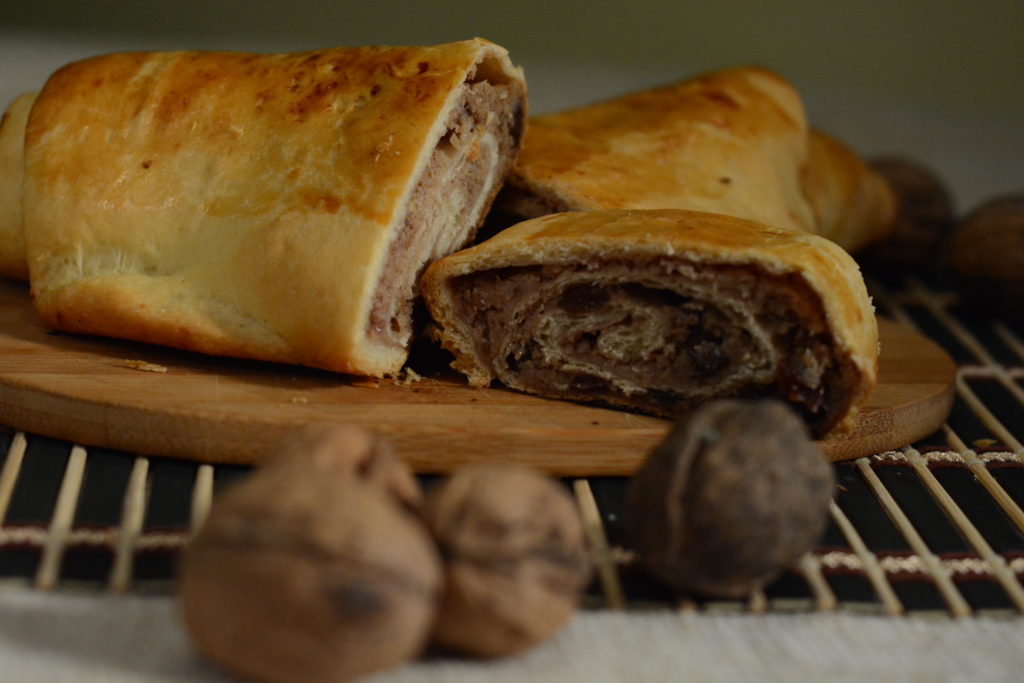
Adevărate urme vii găsim la Archita. Este un loc pe care Dumnezeu pare că ar fi vrut să-l țină pentru El și pe care oamenii parcă au uitat să-l pună pe hartă. Aici îți dă binețe, într-o lume despre care nu credeai că există, cea mai mare biserică fortificată din judeţul Mureş. Crescute din credința oamenilor, în secolul al XIII-lea, Biserica și Archita întreagă au devenit loc de popas des și pentru Prințul Charles de Wales. O formă de artă este și felul de mâncare pe care l-am găsit aici. E făcut cu mâinile și cu tot sufletul de oameni a căror voce tremură ori de câte ori rostesc numele satului. Se numește ciorbă de friptură sau, pe săsește, BRODELAWEND.

Despre Saschiz vorbesc toate ale lui și numai ale lui. Dacă te uiți pe deal, vezi cetatea ţărănească, unde oamenii din vechime se refugiau spre a se apăra, adevărat magnet pentru pilde și legende. Despre ea se spune că era gazdă a unor uriași. Saschizul, cu satul, cu Biserica Evanghelică Fortificată și cu turnul ei sunt în patrimoniul mondial UNESCO. E una dintre cele mai frumoase construcții medievale din Transilvania.
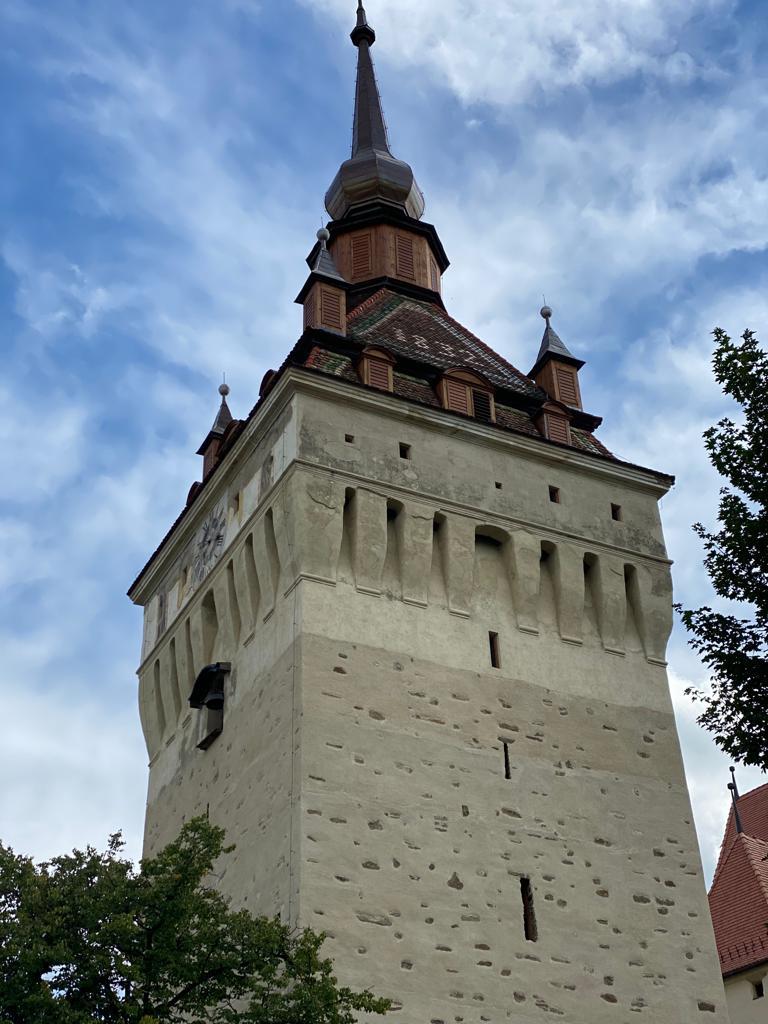
Frumoase sunt și poveștile din bucătăria locului. Istoria rubarbărului (mai pe ardelenește spus „răbarbăr”) e veche la Saschiz și noi am găsit planta minune în felul acela de mâncare ce-i păstreză gustul deplin, și care e numai bun de pus lângă o carne de porc sau de vită. Am adus vorba, fără doar și poate, de inegalabilul SOS DE RĂBARBĂR.

Szásznádasról a helyiek, nemzetiségüktől vagy hitüktől függetlenül, büszkén mesélnek. Ha a múltról szóló szavak arra késztetik, hogy saját szemével lássa a történelmet, menjen a szász várba, ahol az evangélikus-lutheránus templom fogadja Önt. Szásznádasban találtam a régi lakók kedvencét: AZ ÉDES SAJTÓS SZÁSZ SÜTEMÉNYT.
A mindig Bethlen család birtokaként ismert Keresd térképén található, a helyiek büszkeségére, Románia egyik legszebb vára. Azt mondják, hogy az erdélyi reneszánsz építészet legjobb példája úgy a lakhatóság, mint a védelem szempontjából. A régi időkben szinte minden erdélyi könyvre rányomtatták a vár képét. Képeslapokon vagy bélyegeken is jelen volt. A helynek szép történetei vannak, a legtöbbet itt, az erdélyi íjászok legmagasabb tornyának közelében mesélték. Azt mondják, hogy a kastélyban volt egykor Európa egyik legbecsültebb könyvtára, miután Keresden megkezdődött a könyvnyomtatás. Mint egy régi időkből visszacsengő orgonahang, itt találtam egy szász desszertet: a HECCSEM-PECCSES LINZERT.
Ha Apoldba látogat, minden fűszál történelmet mesél, a legendákat pedig kenyérrel eszik. Az erődített templom a határ a történelem és a legenda között, mert itt nehéz harcokat vívtak a törökökkel, és azt mesélik, hogy egy óriás három dombot csinált, miután leült pihenni és megtörölte csizmáját a sárból. Apoldon olyan receptet kerestünk, amely jól talál az eddigi történeteinkbe, és az összes finomság közül a Hanklich vagy a Henklesch nevű süteményt választottuk, egyfajta lepény, melyet itt SZÁSZ HENCLES-nek neveznek.
Segesvár az a hely, ahol legalább egyszer az életben érdemes végigsétálni. Önmagára fog találni. Bármely nap alkalom lehet arra, hogy megálljunk és meghajoljunk „Románia középkori ékköve” előtt. Segesváron otthon kell élni. Az erődben a történelem levegőjét lélegezheti be, a pillanatot inspirálja a 64 méteres toronyban uralkodó, svájci mechanizmussal és csaknem 2 és fél méteres számlappal rendelkező óra ütése. Az Óratorony Románia egyetlen függőleges múzeuma is. A Vlad Dracul-ház története azt meséli, hogy itt született Vlad Țepeș, akit néhány ember és néhány legenda bátran Drakulának nevez. Az Iskolalétra 176 lépcsője a Dombon levő iskolába vezet, mely ma a „Joseph Haltrich” Líceum nevet viseli. Itt található Segesvár legfontosabb építészeti emlékműve, a Dombon levő templom, az erdélyi gótikus stílus egyik szimbóluma. Nem sok ilyen templom van, ahol a kripta a kórus alatt helyezkedik el. A céhekről elnevezett erőd tornyainak mindenike Segesvár legendáit meséli el. Itt sokféleképpen étkezhet, és az ételek biztosan mérföldkővekké válnak saját gasztronómiai térképén. Például itt érdemes kipróbálni a SERTÉSGYOMORBÓL készült ételeket.
Segesvár közelében vannak lelkek, akik az elmúlt száz évben nyomon követték a vár történelmének minden leheletét. Ők az évszázados tölgyek, amelyek még akkor is helyükön maradnak, ha villám, rossz emberek keze vagy tűz pusztítja őket, hogy több száz élőlénynek otthont biztosítsanak. A Breite-fennsíkon található erdő több mint 600 tölgyet tartalmaz, ezzel Kelet-Európa legnagyobb, 120 hektáron elterülő évszázados fák gyűjteménye. A legidősebb tölgy csaknem 800 éves, törzsátmérője több mint 7 méter. A mesés tájjal és a fák odúiban rejlő titkokkal az erdő a madarak és növények, több tucat rovarfaj és több száz fajta pillangó paradicsoma.
Aki napjainkban Fehéregyházán utazik át, Petőfi Sándor költőre emlékezhet, aki vélhetően az Ispán-kútnak nevezett helyen halt meg. A Petőfi Múzeum Luise Haller grófnő történetét is elmeséli, aki itt tervezte el a fehéregyházi-segesvári csata emlékművének felállítását. Ez volt az 1848-1849-es magyar forradalom mérföldköve, mely forradalomban több mint 1000 ember vesztette életét. Fehéregyházán, pontosan ezen hely alatt, ahol most rózsák vannak, a véres csatában meghalt több száz magyar katona csontjai találhatóak.Itt sok olyan étel van, amely a szász-magyar hagyományokat ötvözi. Mára már nem lehet tudni, melyik étel kitől származik, mert kezdetük az ősi időkben vándorol. De az emberek szépen összerakták őket és ünnepi asztalokra helyezték. Ilyen az a desszert is, amelyet a szászok „csodakalácsnak”, a magyarok pedig BEJGLI-nek neveznek.
Valódi élő nyomokat találunk Erkeden. Úgy tűnik, hogy ez egy olyan hely, amelyet Isten magának szeretett volna megtartani, az emberek pedig elfelejtették feltüntetni a térképre. Itt, egy olyan világban, amiről nem is gondolta, hogy létezik, Maros megye legnagyobb erődített temploma köszönti. A 13. században az emberek hite által felemelt Egyház és az egész Erked Károly walesi herceg gyakori pihenőhelyévé vált. Egy művészeti forma az az étel is, amit itt találtam. Olyan emberek kezével és lelkével készül, akiknek hangja megremeg, akárhányszor a falu nevét kiejtik. Sült levesnek nevezik, szászul pedig BRODELAWEND -nek.
Szászkézdről beszél minden ami benne van. Ha felnéz a dombra, láthatja a paraszti erődöt, ahol az egykori emberek menedéket kerestek, igazi mágnes a példázatokhoz és legendákhoz. Állítólag ő volt az óriások házigazdája. Szászkézd, a falu, az Erődített Evangélikus templom és a torony az UNESCO Világörökség része. Erdély egyik legszebb középkori építménye. A helyi konyha történetei is gyönyörűek. A rebarbara (erdélyi nevén „rebarbara”) története nagyon régi Szászkézden, és megtaláltuk a csodanövényt abban az ételben, amely megőrzi teljes ízét, és amelyet sertés- vagy marhahús mellé érdemes tenni. Ez nem más, mint a páratlan REBARBARASZÓSZ.
Locals in Nadeș will take pride in telling you stories about the place regardless of their nationality or belief. If tales of past times make you want to experience history with your own eyes, go to the Saxon citadel, where you will be greeted by the Gospel Lutheran Church. In Nadeș we found a popular choice of people living a long time ago in these lands: THE SAXON CAKE FILLED WITH SWEET CHEESE.
Criș, forever known as the estate of the Bethlen family, shows on the map, locals taking pride in this, one of the most beautiful castles in Romania. It is said that this is also the best example of Renaissance Transylvanian architecture with living and defense purposes. In old, ancient times, no book on Transylvania would see the light of the print without bearing the face of the castle. The castle was also present on postcards or on stamps. The place is rich in beautiful stories, several told precisely here, neat the highest tower of the bowmen in Transylvania. It is said that one of the most appreciated libraries in Europe was also hosted here, as a consequence of the book printing business emerging in Criș. Resembling the sound of a pipe organ from ancient times, we also found here a Saxon dessert: LINTZER WITH HECIUM PECIUM.
If you visit Apold, you will find history breathing through each grain of grass and will submerge in a land of legends. The fortified church located here is a bound between history and legend, as this is the place where tough battles with the Ottomans were fought and it is also said that a giant built three hills here, following which he laid himself to rest and cleaned his muddy boots. It is here where we asked for a recipe which would fit well in our story so far and among all relishes, we chose the Hanklich or Henklesch cake, a sort of peasant pie, locally baptized as the SAXON HENCLEȘ.
Sighișoara is the place you really must meet once in a lifetime! This will be a recollection with yourself. Every day can be an occasion for you to stop and take a bow before „Romania’s medieval jewelry”. Sighișoara must be experienced on-site. Within the fortress, you can breath history and inspire your moment on the background of the clock reigning from the 64 meters tower, with its Swiss mechanism and a quadrant of almost 2 and a half meters. The Clock Tower is also the only vertical museum in Romania. The story of the House of Vlad the Impaler says that this is where Vlad Țepeș was presumably born, the one boldly called by some people and legends as Dracula. The Scholars’ Stairs leads you along its 176 stairs up to the School on the Hill, nowadays known as „Joseph Haltrich” high school. This is also where the most important arhitectural monument of Sighișoarei, the Church on the Hill, is found, one of the symbols of the Gothic style in Transylvania. Not many churches have, as this one does, a crypt under the choir section. Bearing the name of fellowships, the fortress’s towers each tell you legends of Sighișoara. One can eat here several dishes which will certainly become landmarks on your own gastronomical map. Among these, you must try a MOAGĂNĂ.
Sighișoara’s nearby area is surrounded with souls tracing every breath of the fortress during the last hundreds of time – the multiple-secular oaks which remain faithful to the place even when submitted to the anger of the thunder, to mean people or to fire, in order to be the house of hundreds of living beings building a bed there. The forest located on the Breite Plateau is the home of more than 600 oaks and the largest collection of multiple-secular trees in Eastern Europe, developed along 120 hectares. The oldest oak is almost 800 hundred years old and the diameter of its trunk has more than 7 square meters. With a fairytale aspect and full of trees hiding mysteries in their hollows, this forest is the heaven of birds and plants, of the ten’s of insects’ species and hundreds of butterfly types.
Contemporary walks through Albești cherish the memory of poet Petőfi Sándor, believed to have passed away in the place nowadays called the Ispán Fountain. The Petőfi Museum also tells the story of countess Luise Haller, who organized the construction of the monument dedicated to the Battle in Albești/Sighișoara. This was the landmark for the Hungarian Revolution from 1848-1849, during which more than 1.000 people have died. This precise spot in Albești, where roses now lay, is the home of the remains of hundreds of Hungarians killed in the bloody battle. Here one can find several dishes merging Saxon and Hungarian traditions. One cannot tell which one belongs to whom, as their beginnings wander through old times. These dishes were, however, nicely gathered by people and laid on festive tables. This is also the case of the dessert called by the Saxons the „wondrous pound cake”, and BEJGLI by the Hungarians.
True alive traces dwell in Archita. This is a place God seemed to have wanted to keep for Himself, seeable forgotten by people’s maps. Here, you are greeted into a world you did not believe it longer exists, that of the largest fortified church in Mureş County. Grown out of the people’s faith during the 13th century, the Church, along with the entire Archita became an often sojourn for Price Charles of Wales. The type of food we found here is also a form of art, made with hands and soul by people whose voice shivers every time they utter the name of the village. Namely, the steak soup, or as Saxons would put it, the BRODELAWEND.
Saschiz is a place with a unique heritage. Should you see the hill, the peasant fortress appears in sight, where old people would find shelter in order to defend themselves, a true magnet for parables and legends. Rumor has it that this was the home of some giants. Saschiz, together with the Fortified Gospel Church and its tower are a part of the world UNESCO patrimony. This is one of the most beautiful medieval constructions in Transylvania. Similar in beauty are also the stories related to the local cuisine. The history of the rhubarb (or as the Transylvanians would put it, „răbarbăr”) goes a long way back in Saschiz and we discovered this wondrous plant in that sort of dish which keeps is intact flavor, best served with pork or beef meat. One must inevitably speak of the irreplaceable RHUBARB SAUCE.

